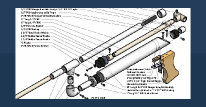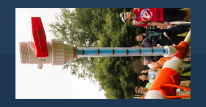6464K11 - directional control valve (DCV)
5116K81 - fittings for the DCV
(also tubing and barbed fittings)
-this isn't from MM, but you'll also need a hornet valve
Okay, start by putting in the fittings.

Shave out the mav like so.

We're going to be using the catch to operate a small button on the top of the DCV. In stock form, the catch will not fit around the valve. Shave like so. Stock on the left, modded on the right.

The catch is pretty flimsy to begin with, and will bend rather than depressing the button on the DCV. Glue on some thin plastic strips.

And then put on some epoxy putty.

The catch still won't be able to slip over the button without depressing it slightly and making the valve leak air. I shaved little notches in the valve corners on the bottom to remedy this.

You're also going to need to add some plastic to the bottom of the lever on the catch.

All that's left for the trigger set-up is connecting tubing and screwing the valve into the shell. Here's what it should look like.

Let's move to the firing valve. Shave out the front part of where where plunger used to sit so you can comfortably fit the hornet valve in there. Also cut off the front of the plunger. Before gluing the front piece to the hornet valve, do lots of test fitting and sanding to make sure the front orange piece will be seated correctly. When your done, hot glue in the assembly.

Now use the holes in the DCV to screw it in. You'll notice that one screw is upside down. This is to prevent the head from interfering with the catch. This screw is just keeping everything aligned, the left screw is what's actually holding down the valve.

I also ran the screws through the stock priming slider; it covers up the hole and DCV in the back of the gun.

Now we just do tubing and we're done! Drill a hole in the handle as shown. I used 1/4" bit, but than had to widen the hole. If the tubing going through it has a barbed tubing inserted at the hole (my set-up), you'll need a slightly bigger hole. I recommend a 5/16" bit.

Now glue a barbed coupler like so. This line goes to the input.

Now just connect the DCV to the hornet valve and you're done.

Now a lot of you are probably wondering how the hell this works. Doom has an excellent explanation here. Just pretend the 1/4" QEV is a hornet valve. NB: the DCV DOES NOT work with salvo valves. The flow rate is too shitty. I originally intended to use this valve on my DTB (expect a write-up for that *soon*).
What do y'all think?
Oh yeah, vid will be up sometime soon, tonight or tomorrow. This does work though, I've tested.

















